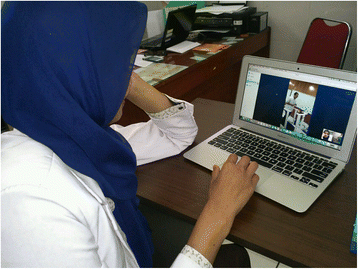Tele-medicine in respiratory diseases
- PMID: 28435672
- PMCID: PMC5397786
- DOI: 10.1186/s40248-017-0090-7
Tele-medicine in respiratory diseases
Abstract
Information and Communication Technologies applied to health care and advances in sensor and data transmission technology allowed tele-medicine based programs of care also for patients with respiratory diseases. Different sensors, transmission devices and interventions are used in tele-medicine for some indications. Patients suffering from Chronic Obstructive Pulmonary Disease, asthma, neuromuscular diseases, ventilator assisted individuals and those undergoing pulmonary rehabilitation programs may benefit from this approach. The legal problems are still unsolved. Economic advantages for health care systems, though potentially high, are still poorly investigated. Despite the hopes, we need more evidence before this modality can be considered as a real progress in the management of patients with respiratory diseases. On one hand, these technologies can improve the care of patients with difficult access to services, particularly those in rural/remote areas, on the other hand, there is the risk that they will be used only to reduce standard services in health systems of developed countries.
Keywords: COPD; Chronic respiratory failure; Ehealth; ICT; Neuromuscular diseases; Tele-monitoring; Tele-rehabilitation; Ventilator assisted individuals.
Figures
References
-
- Wiseman V, Mitton C, Doyle-Waters MM, Drake T, Conteh L, Newall AT, et al. Using economic evidence to set healthcare priorities in low-income and lower-middle-income countries: a systematic review of methodological frameworks. Health Econ. 2016;25(Suppl 1):140–61. doi: 10.1002/hec.3299. - DOI - PMC - PubMed
Publication types
LinkOut - more resources
Full Text Sources
Other Literature Sources


